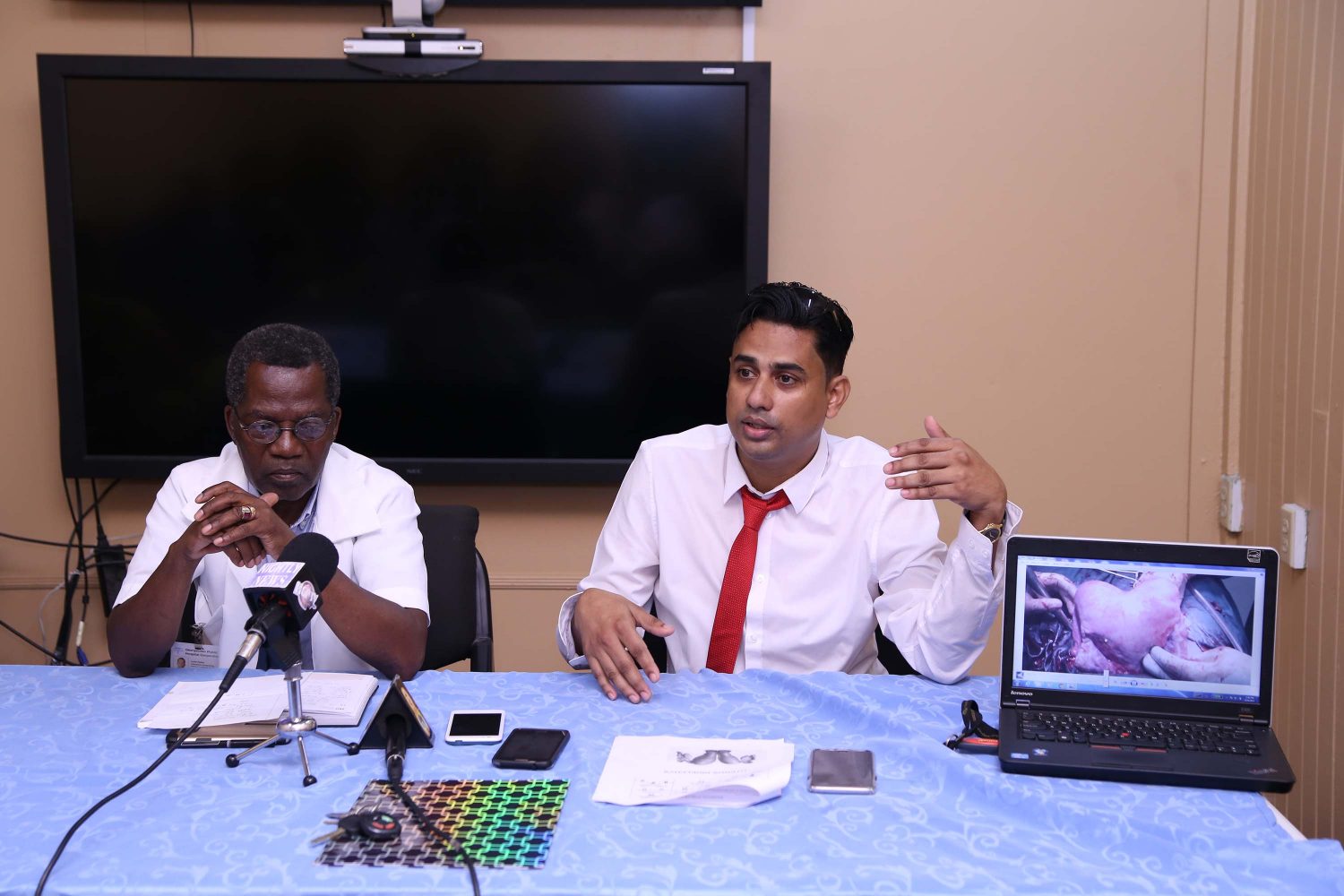The Georgetown Public Hospital Corporation (GPHC) recently saw its first case of a double-uterus twin pregnancy, where twin babies developed in and were delivered from two separate uteruses, a reportedly one in a million occurrence.
On August 25th, the babies, one boy and one girl, were delivered via caesarean section at the GPHC.
Up until the time of delivery, neither doctors, nor the soon-to-be-mother had known of the unique circumstances they were about to encounter.
Double uterus, or Uterus Didelphys, is where the mullerian duct (which forms the foundation of the reproductive tract) fails to fuse, resulting in the formation of two uteruses and two cervixes.
“During post-grad studies, this is my second specialty—gynae obstetrics—you read about so many different things…And even though we have had multiple presentations on…malformation of the uterus and so forth, you don’t actually get to see these things. So this was a first for me. I’ve seen a case on TV that was discussed in Miami and that’s why I know the statistics at the time to get pregnant like that is one in a million. But these things are very, very rare. You probably would have it once if at all in your entire medical career. So, I was very excited,” Dr Rafi Rozan stated during a press briefing at the hospital yesterday.
Rozan, who had been in charge of the theatre on the day of the delivery, related that it was not until he had successfully delivered the first baby, that he realized that the babies had grown in separate cavities.
“So, when I actually went in and I delivered the male baby—the baby boy—there was no way to get into the other side. You had to make another incision, which we call a hysterotomy, in order to go in over on the other side and deliver the baby girl,” Rozan related.
In another unique occurrence, both babies reached full term, having been delivered at 37 weeks and one day, and were of normal weight.
The risks are high in cases like these. Pedro stated that most pregnancies of this nature end in abortion, or premature delivery, with only 25 to 30% going to full term.
Doctor Rozan related that while twins are usually born pre-term and delivered with low rates, both babies’ weights were normal.
There were also no complications experienced during surgery.
Dr Lucio Pedro, Head of the Gynaecology and Obstetrics Department, stated that while this is not the first case of “uterine abnormalities” that they have seen, it is the first involving two babies, as it is the case that a baby will usually develop in the larger of the two uteruses.
Asked why the anomaly was not picked up earlier in an ultrasound, it was explained that it is quite difficult as the cavities are separated by a thin lining, and so it is not easy to pick up during gestation.
“The thing about discovering these things as Dr Pedro was mentioning, it’s not very easy because when the babies are growing, that uterus works as a physiological tumour; it grows very big. So, ultrasonographically, if you’re looking at it from the abdominal—from the front—what you are basically looking for is just a thin line, because that septum is seen from one side,” Rozan explained.
Rozan stated that uterine malformation is rare and occurs in only 0.05% to 5% of the general population, though statistics related to Guyana are unknown.
“So usually to actually have didelphys uterus with babies in each cavity and reaching successful termination or delivery of the pregnancy in the way that this occurred is usually one in a million, and our population, it’s like winning a mega lottery. Our population is less than a million, so it’s probably the first case ever documented,” he stated.
Rozan also said that while most patients with the anomaly are asymptomatic, some suffer from pain during sexual intercourse, experience painful menstrual cycles and have issues with fertility.
“When you do get pregnant after much difficulties, the patient usually has miscarriage, abortion, pre-term-delivery and since it’s an abnormal uterus, they usually develop problems at delivery because the uterus do not contract the way it’s supposed to,” the doctor said.

